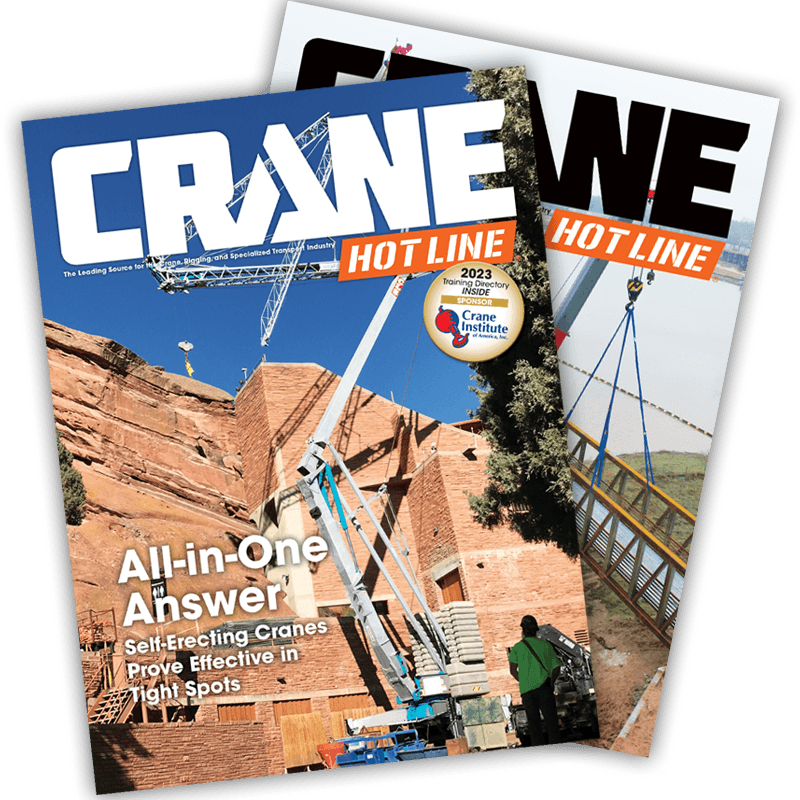Driving Piles and Catching Waves: Lunda Construction Crews Work from Barges this Summer to Get Missouri River Bridge Project Underway
August 23, 2006 - Built in 1922 as the first Missouri River bridge designed for automobile traffic, the Liberty Memorial Bridge was dedicated to North Dakotans who'd fought in World War I. Placed on the National Register of Historic Places in 1997, the structure is winding down life as the final coast-to-coast link of U.S. Highway 10. Lunda Construction is putting a long-span bridge in its place, with the help of several Terex cranes.

Enlarge Image
Several Terex cranes assist in putting a long-span bridge in the place of the Liberty Memorial Bridge.
The
“We're using Terex lattice-boom crawler cranes to do the work,” says Joe Larson, Area Manager for Lunda. “We've got a Terex HC165 floating on a barge doing cofferdam work, and a Terex HC210 floating on another barge for cofferdam pier construction.” On one bridge approach, Lunda has a Terex HC110 driving piling and construction piers. A 50-ton American 5299 is working with the pile splicing operation, while a 75-ton Link-Belt LS 138 and a 50-ton Grove assist around the project site. Most of the cranes will remain on the site until the job is finished sometime in 2008.
This is the first outing for the 165-ton HC165, which Lunda purchased prior to this project. “It just came from
Whatever the reason, though, Larson couldn't be happier with the company's newest purchase, which he reports recently clammed 2,000 cubic yards of material out of a cofferdam in only four days. “It's performing very well.”
The company chose each crane model because its capacity matched the type of work called for in a bridge construction project of this size. Some of the pier forms weigh in at 80,000 pounds a half, and some of the substeel used to build the bridge girders weighs a hefty 149,000 pounds. At 2,400 feet from abutment to abutment, the bridge design includes two 12-foot driving lanes, a 10-foot sidewalk, and five pier overlooks.
The steel structure was designed with two abutments, 13 piers, six spans over the water, three spans in the east approach and five spans in the west approach. Lunda was given three years to complete the $48 million job.
Larson says one of the biggest challenges was transporting the cranes. “It took quite some time to get the equipment from
“We transport everything ourselves with our own trucks,” he says, adding that experienced staff, accustomed to transporting large pieces of equipment on a daily basis, eased the process. Once onsite, it took another two weeks to completely assemble all of the machines, and that's actually another reason the company is sold on the Terex line: “The cranes are very easy to assemble,” he adds.
Aside from all of the challenges involved with a construction project of this size, working from barges presents its own excitement for crane operators and the rest of the construction crew. As the heat has risen to 112 degrees F. this summer, the Missouri River has been a popular recreation spot in
“The river is high-velocity,” says Larson, “which makes it difficult for us to move our equipment around the construction site on barges. Rocking water caused by the wake of other boats can make it dangerous for us. It's also very windy out there. And, we'll face extremely cold temperatures in the wintertime.”
But, used to working in challenging situations all over the upper


